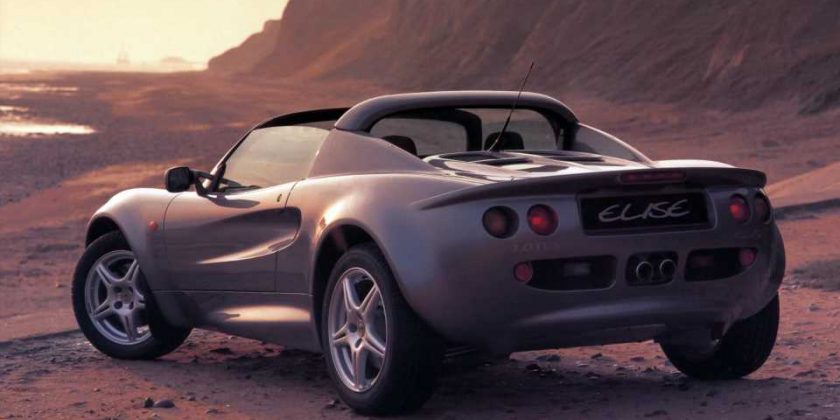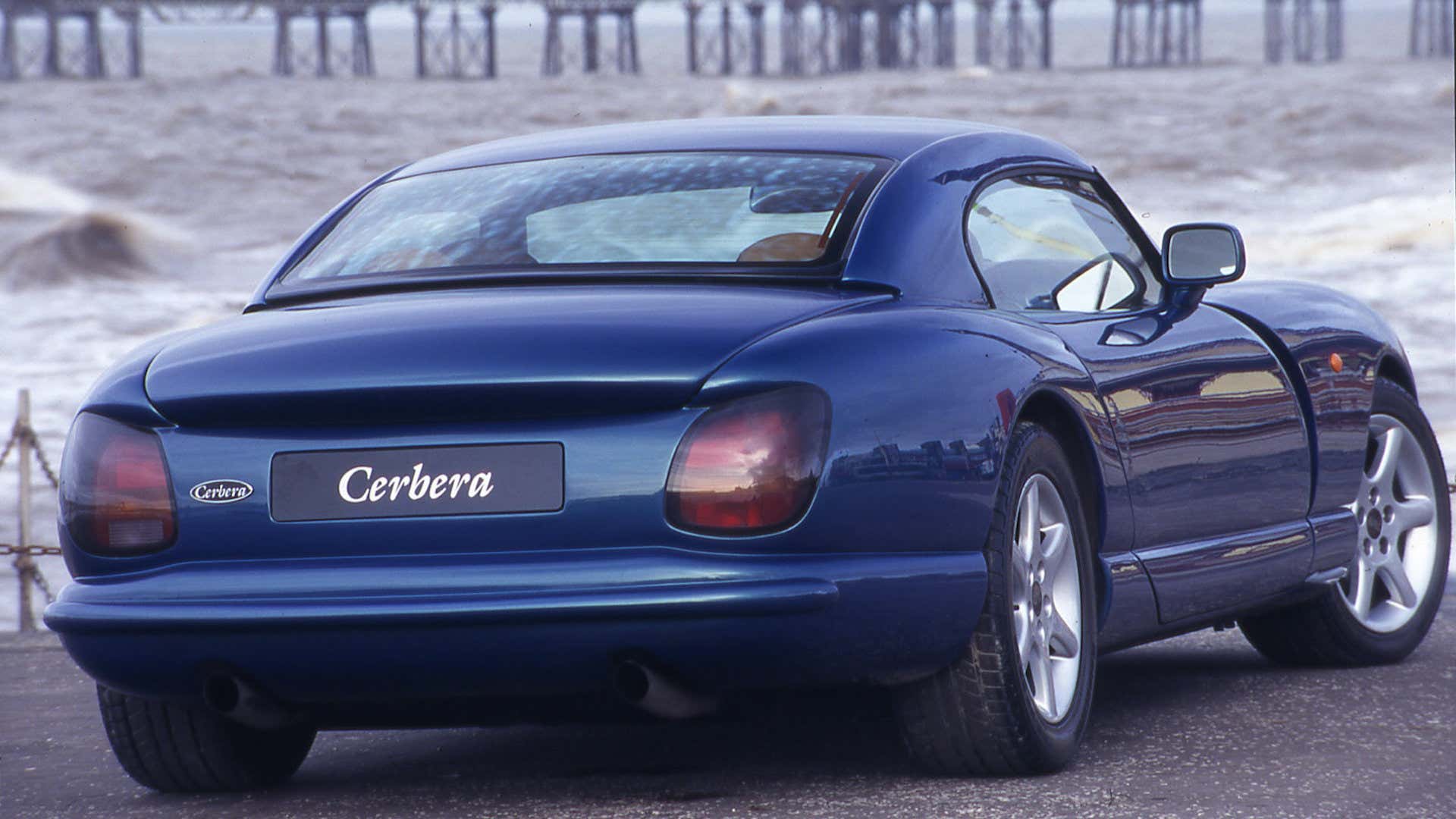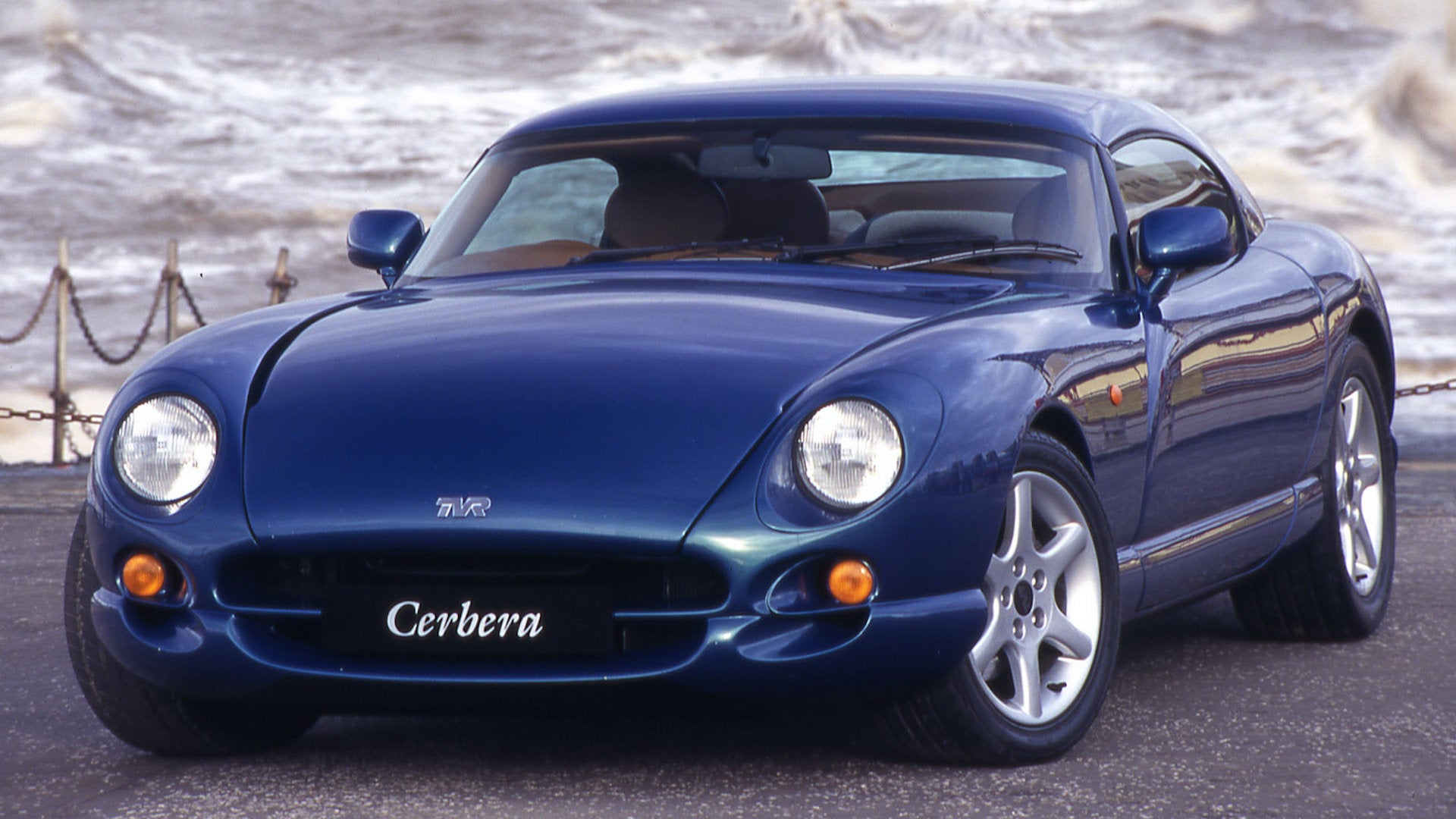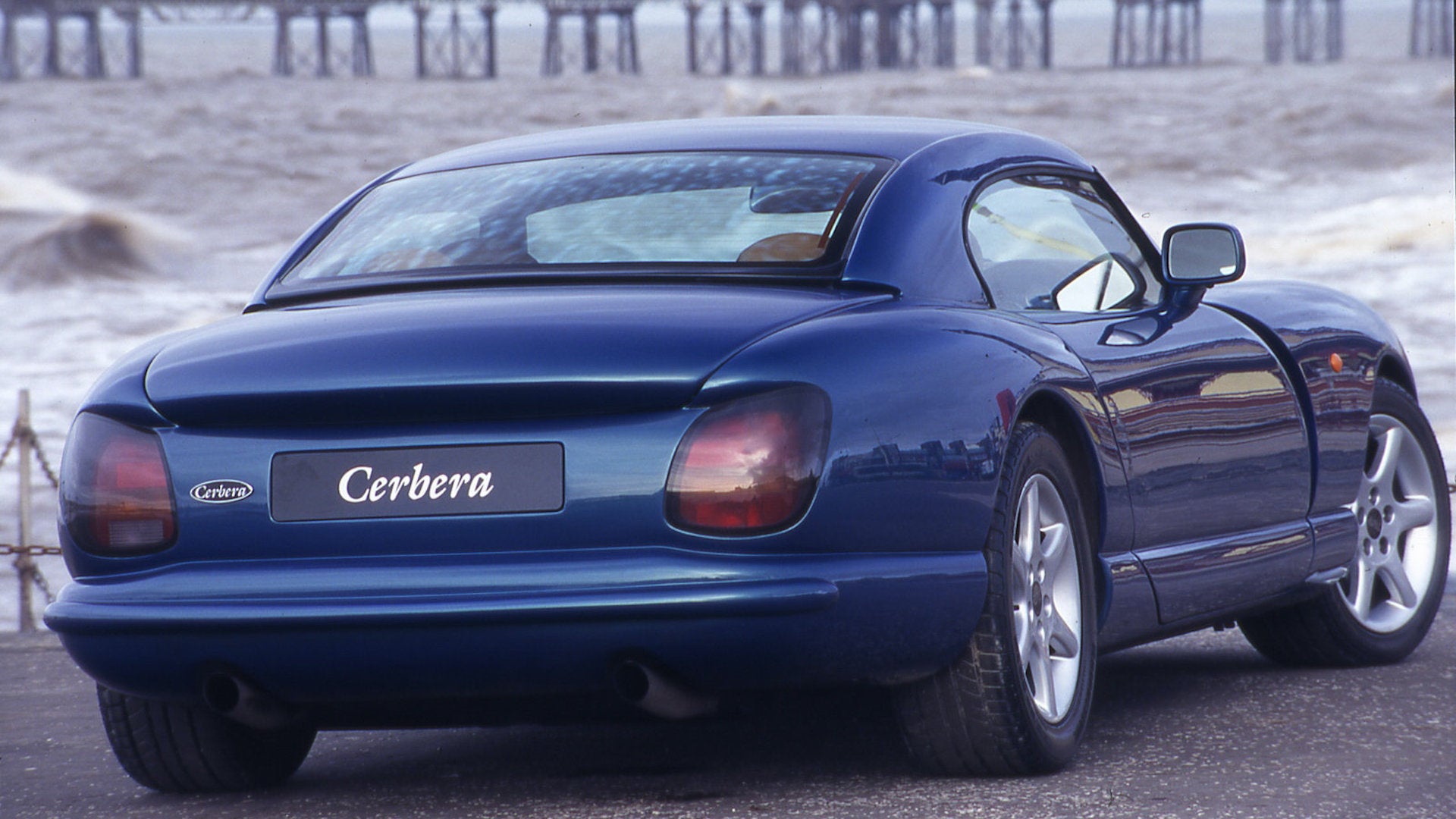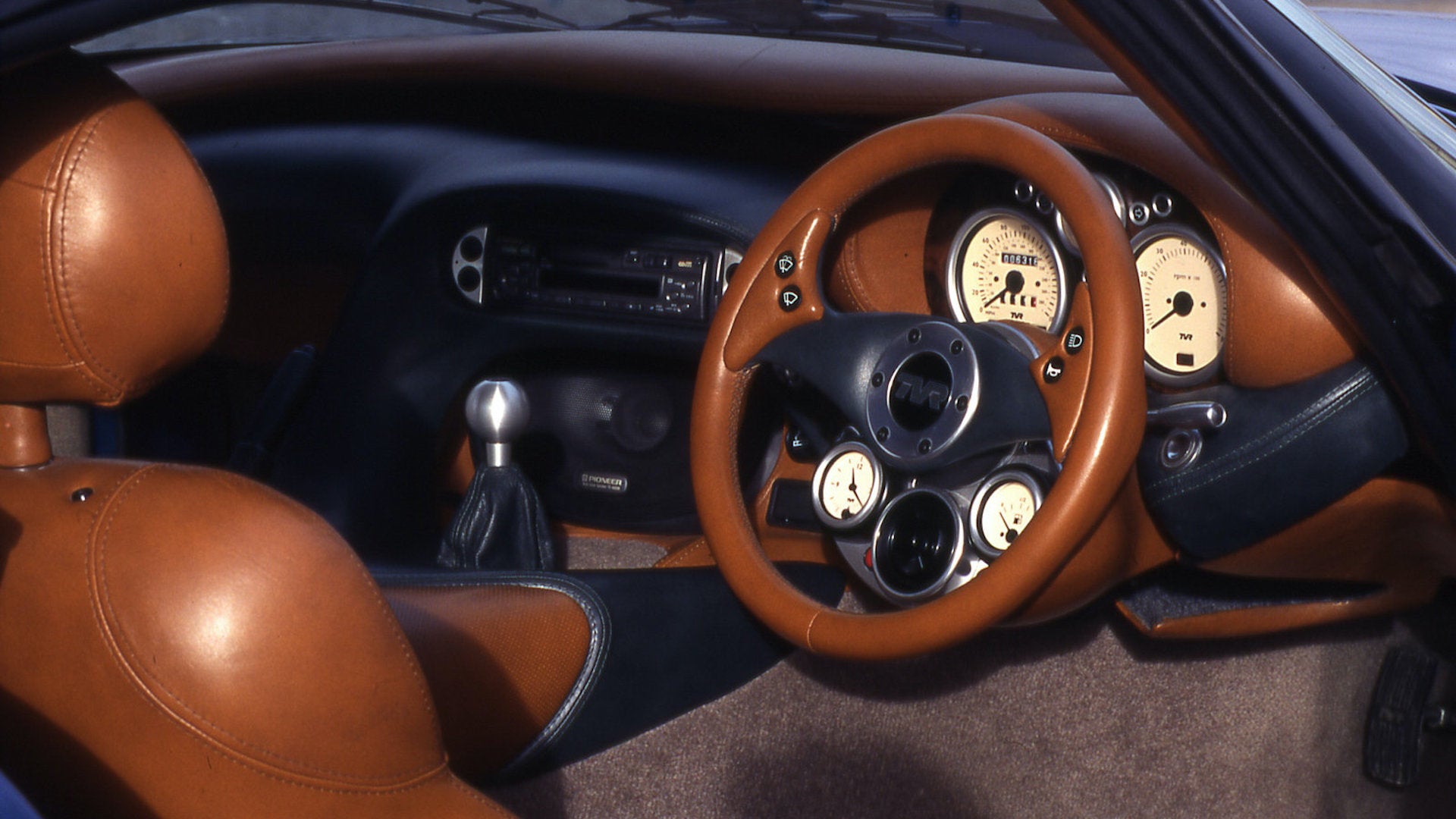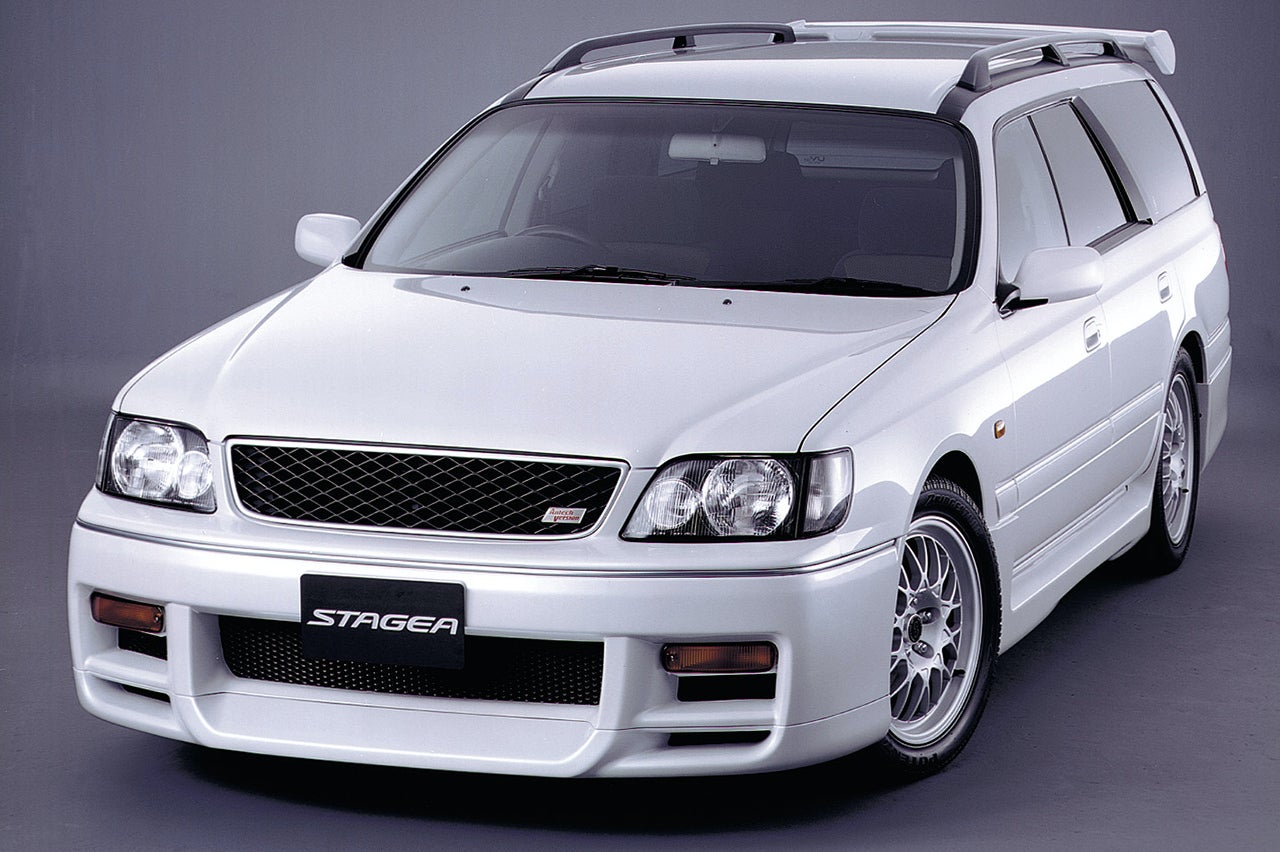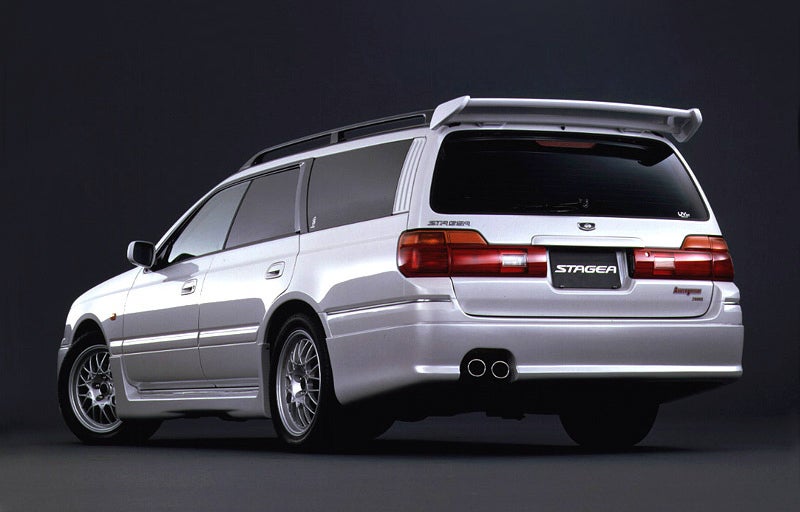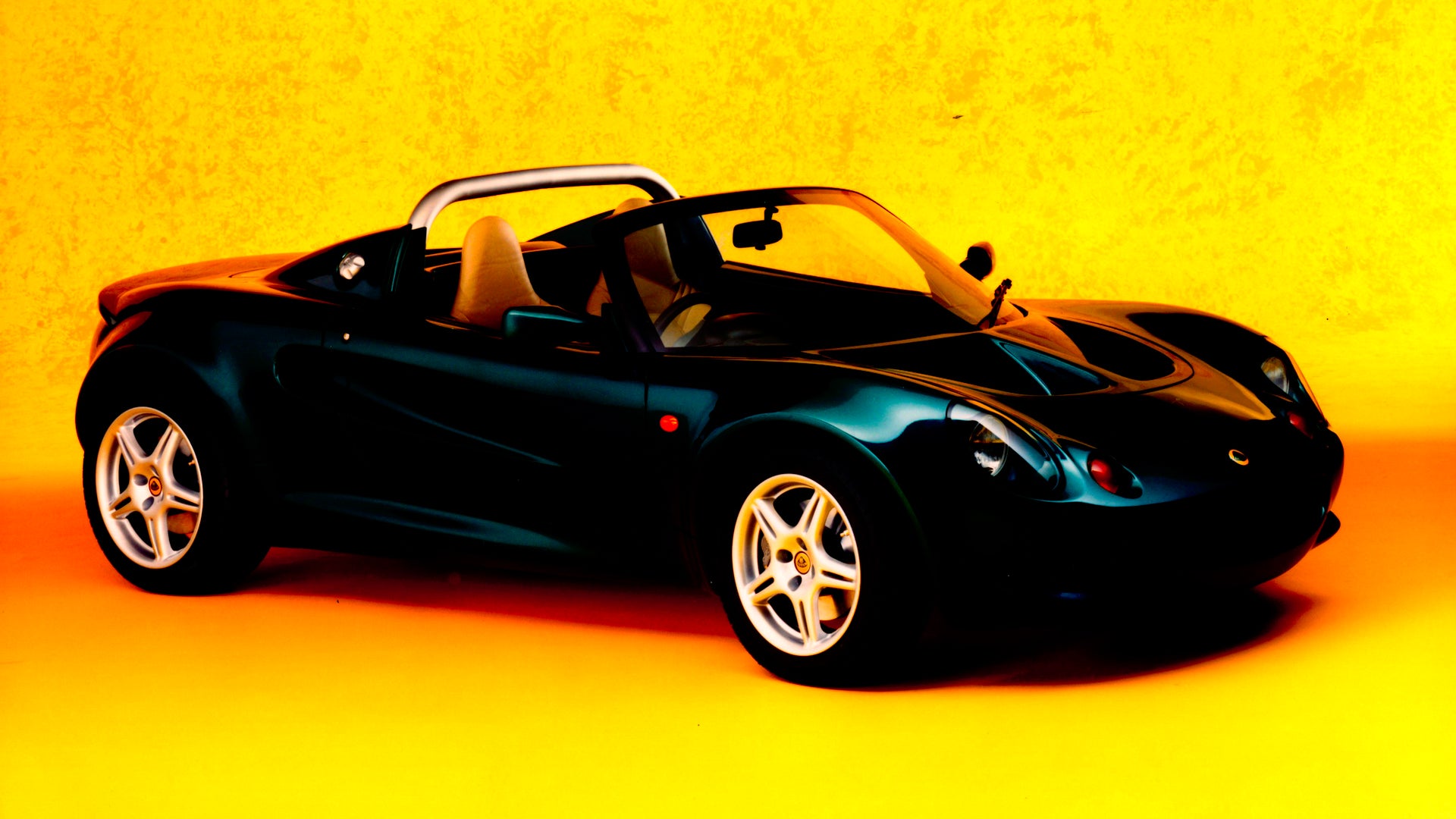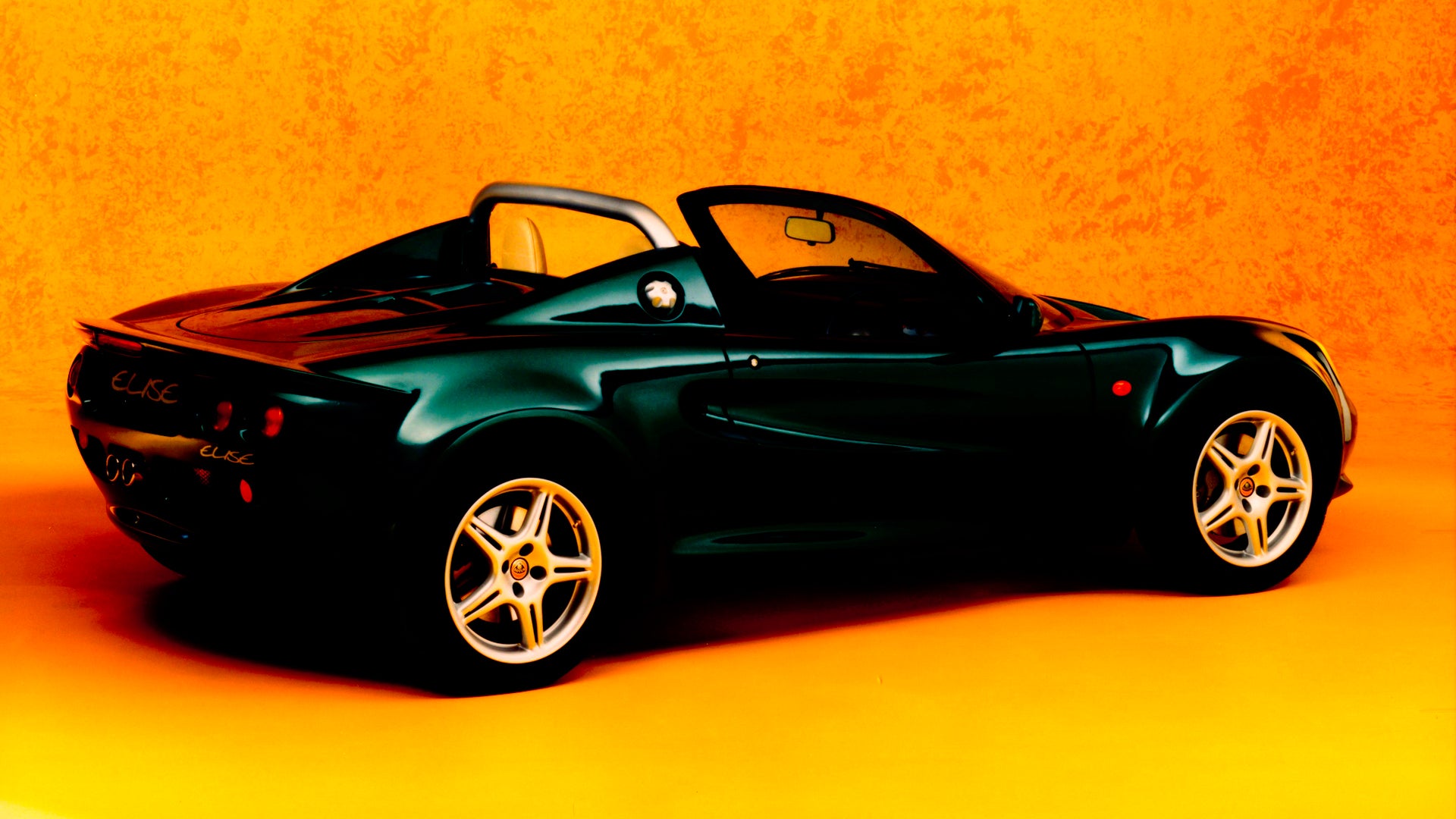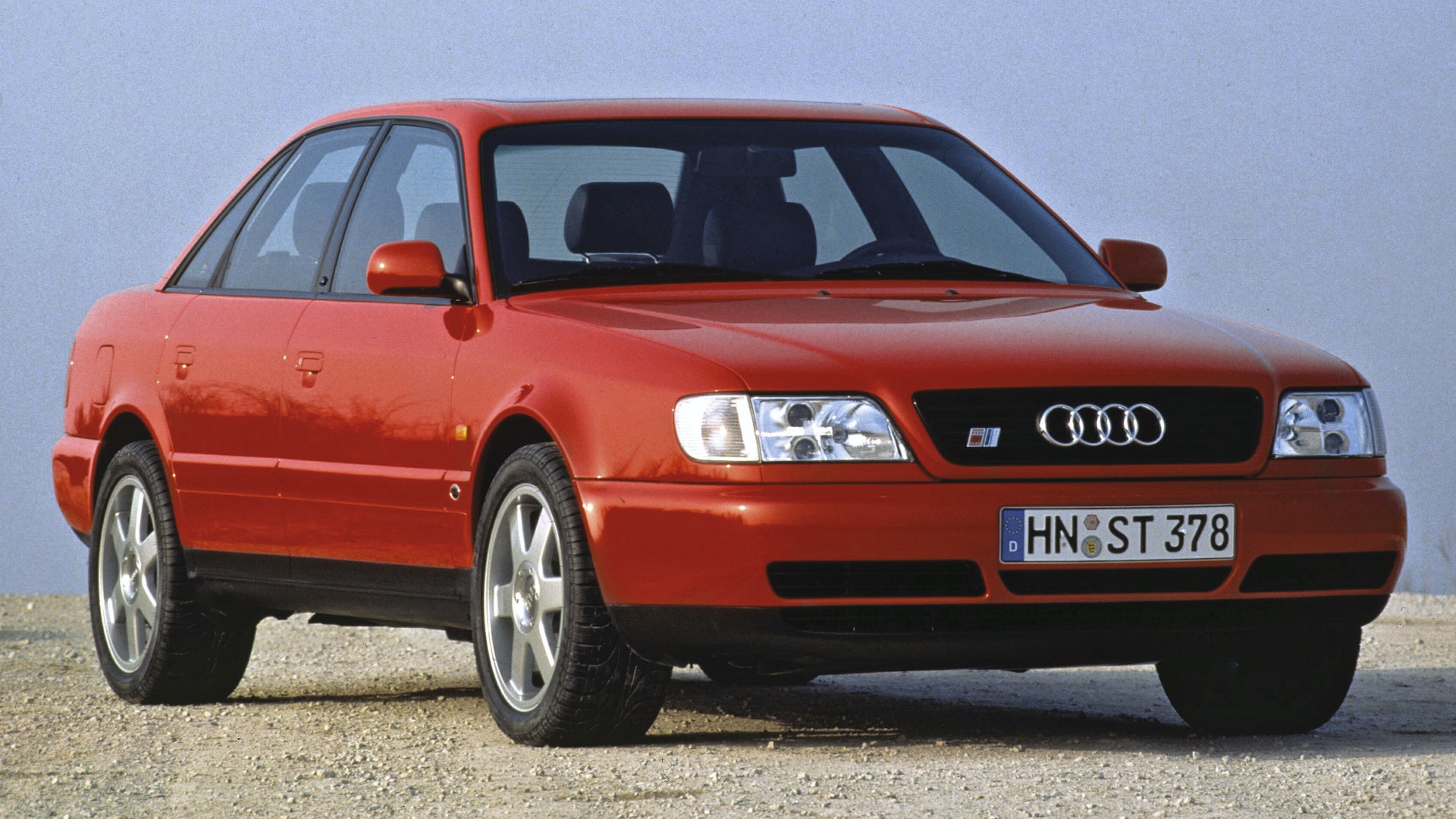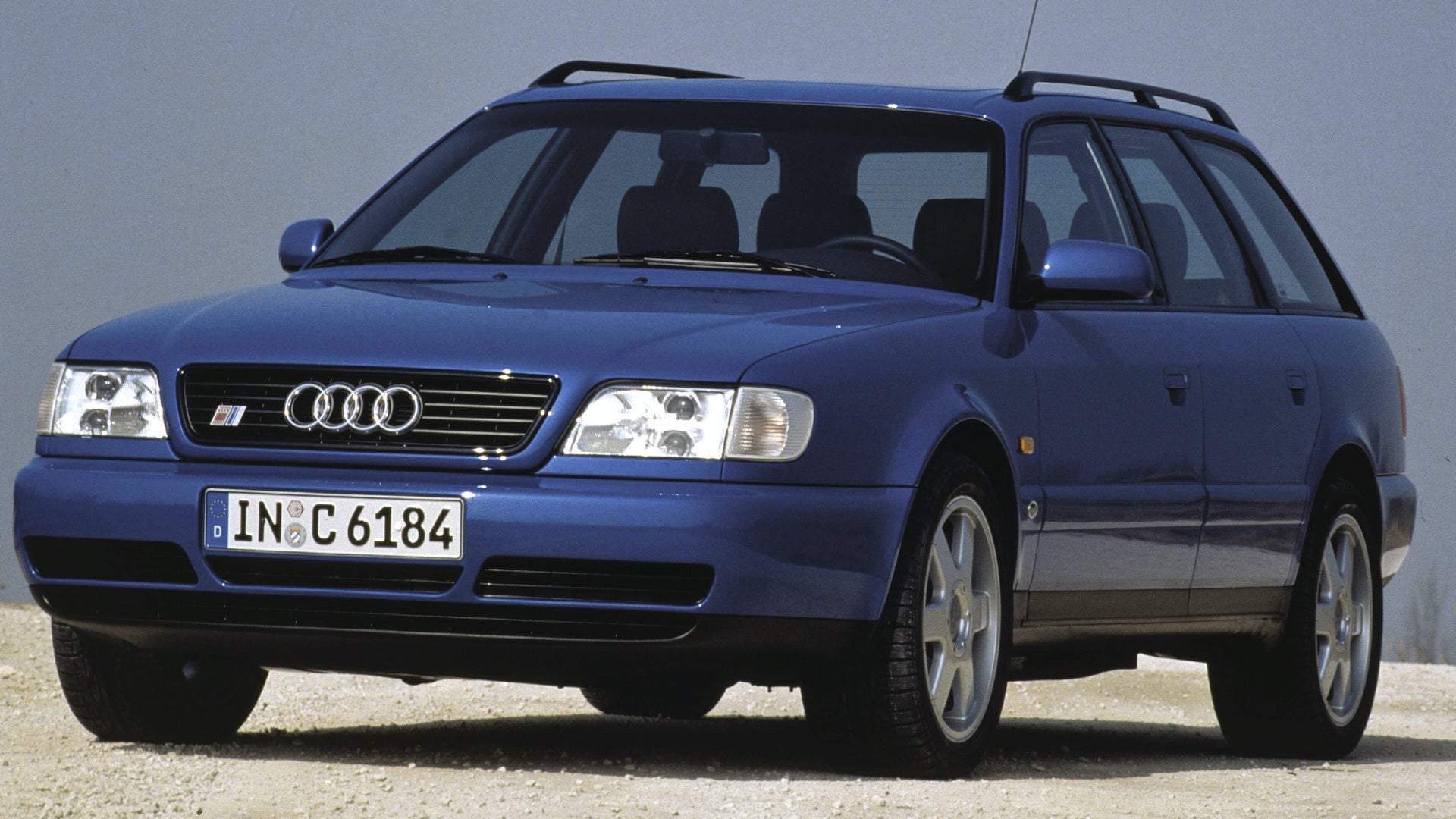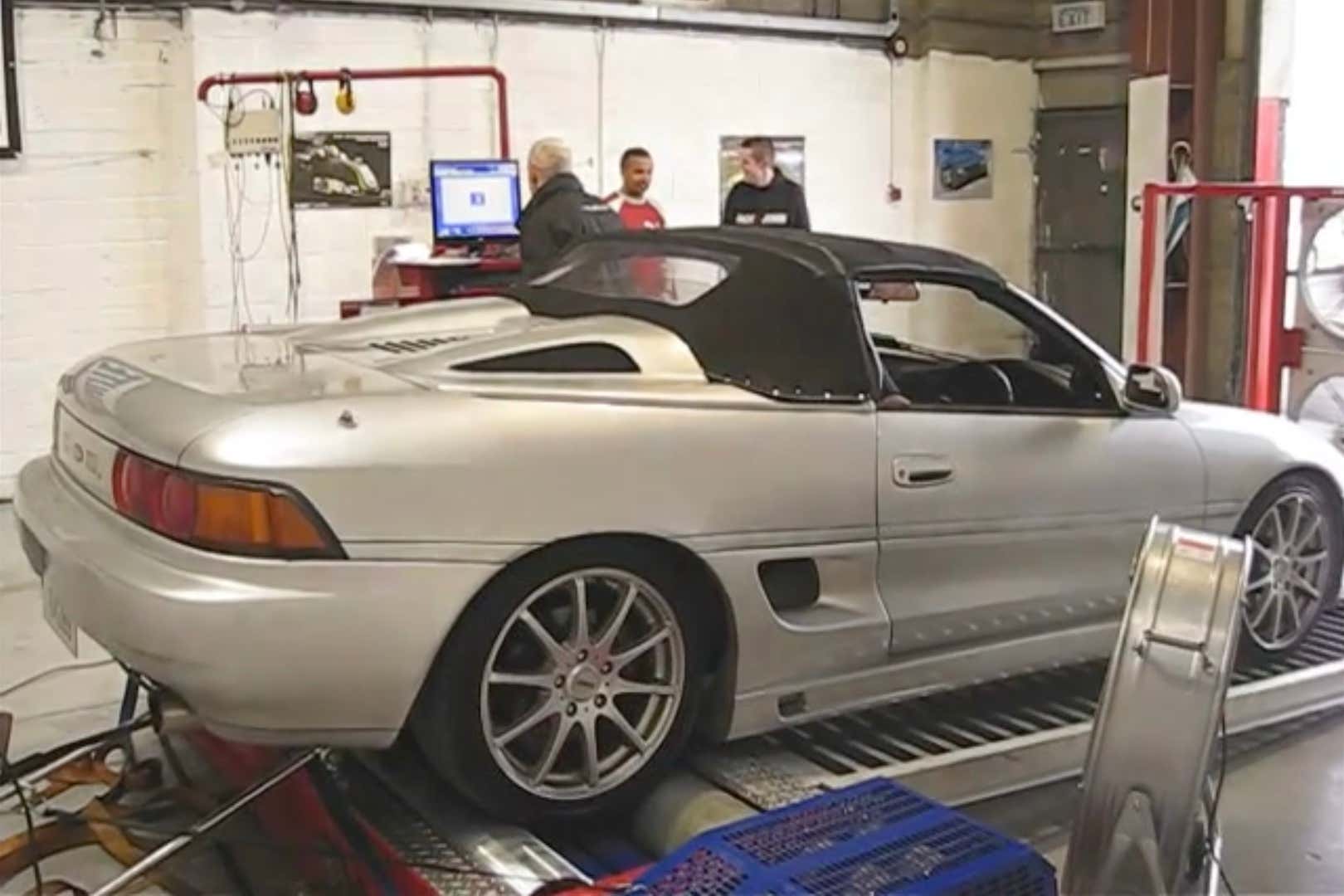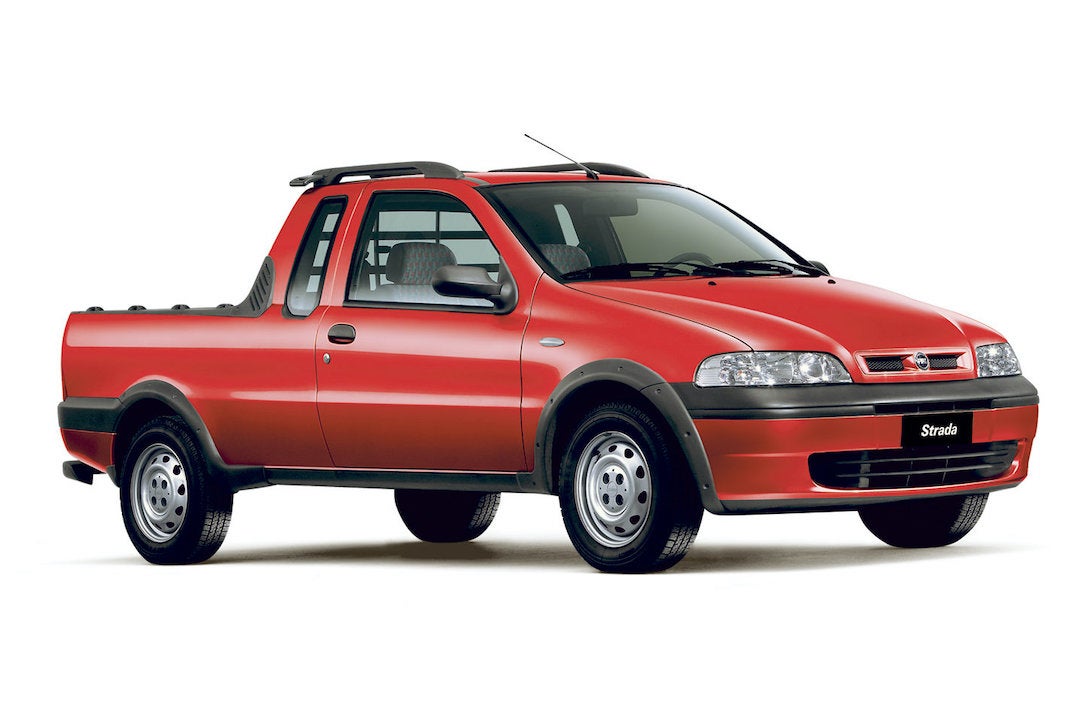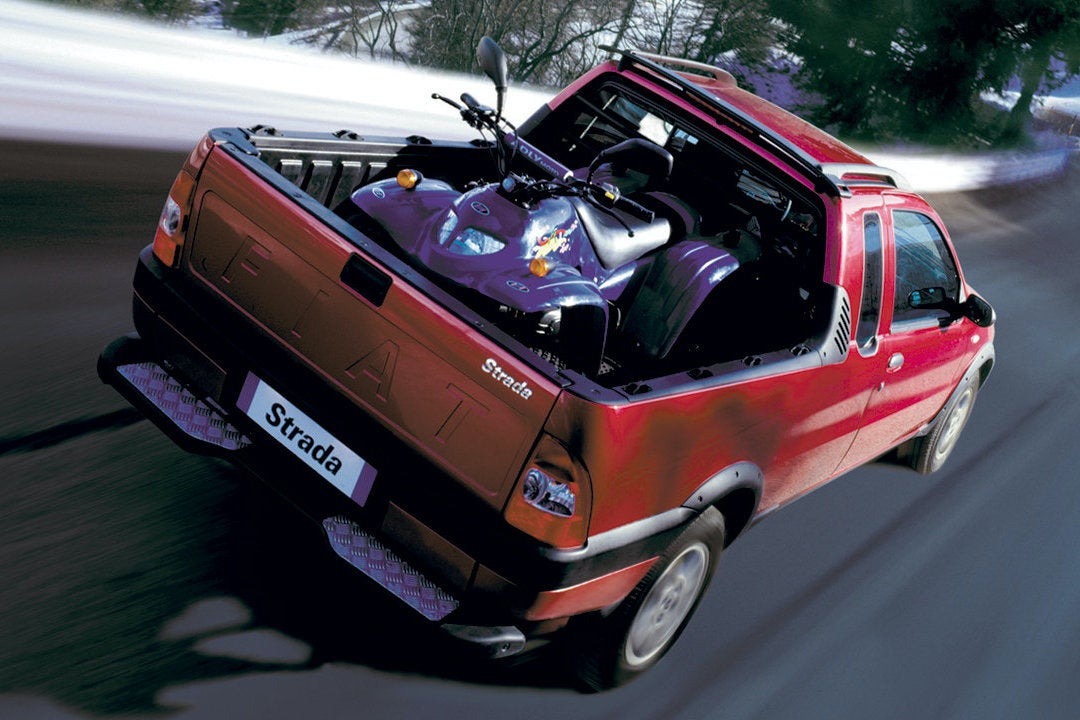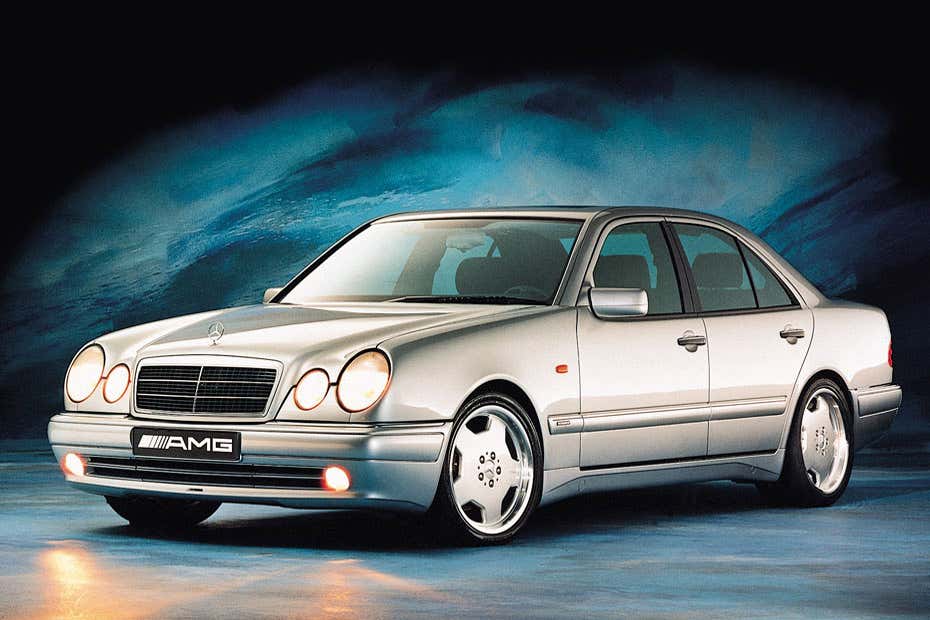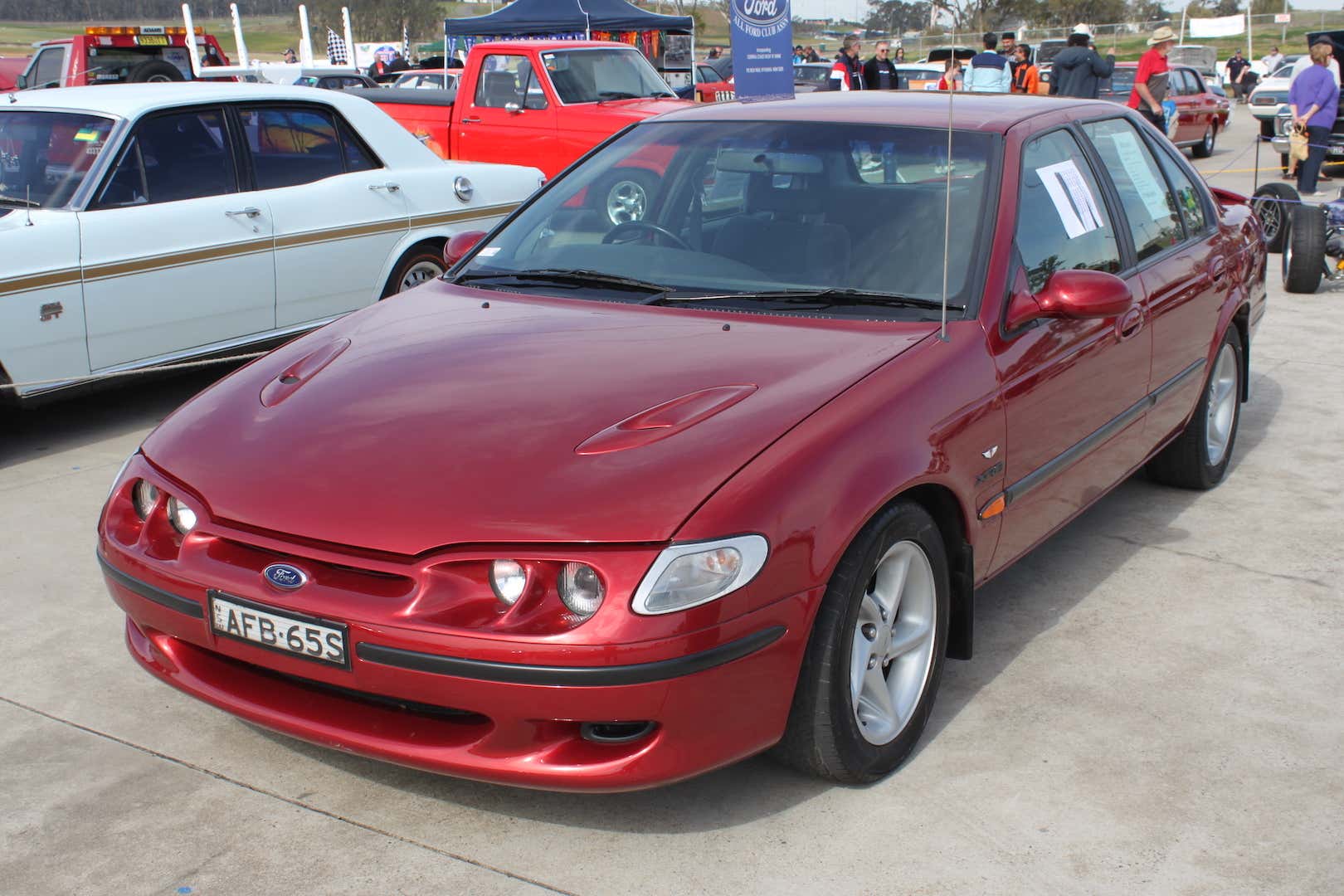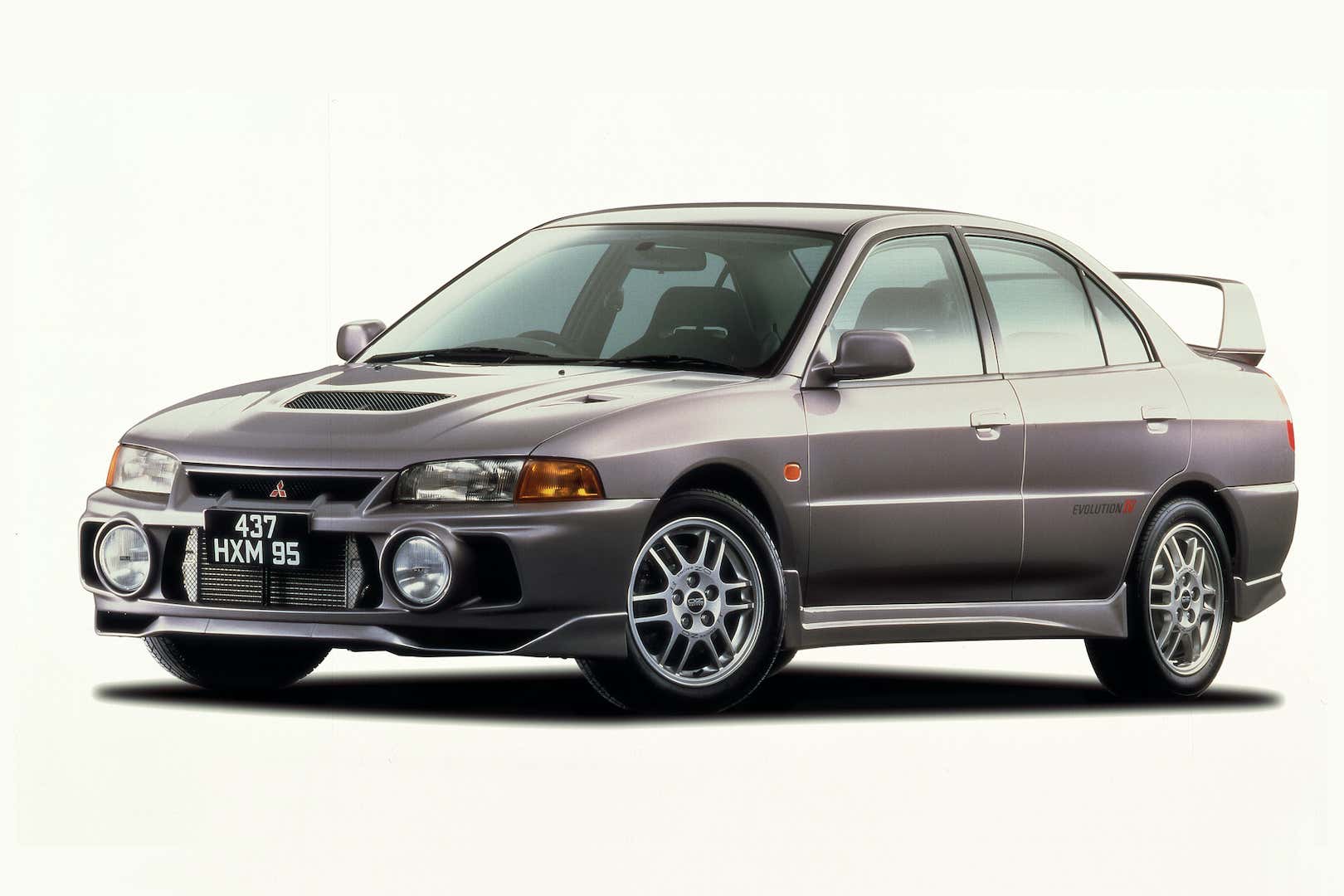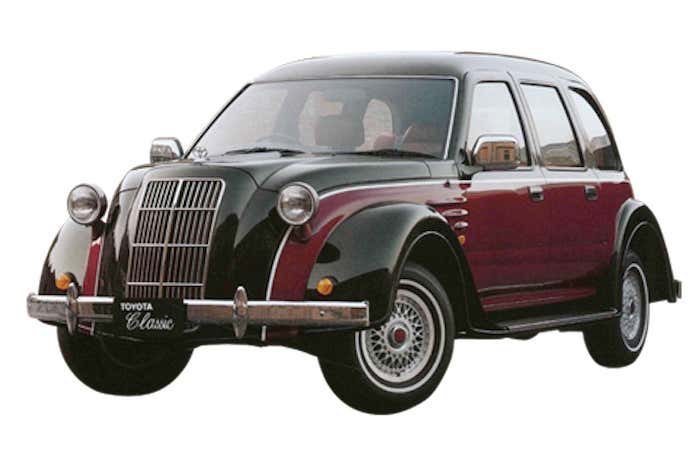Every year, a new batch of cars and trucks age past the United States’ 25-year import ban and begin to trickle into our country in small numbers. In 2021 though, the cars we will experience anew hail from 1996, well past Japan’s famed Bubble Era and the turbocharged boxy goodness of the previous decade. But that doesn’t mean it was a year without new cars of note, some of which will be sought-after in America—and at least one of which was such a success that it’s still in production today.
Let’s get started with a banger from Britain that was arguably the wildest new performance car of 1996.
TVR Cerbera
With a proprietary V8 under the hood and a 2,425-pound curb weight, this British-built two-plus-two is as savage as its name implies. Its 4.2-liter “Speed Eight” engine is unusual by all standards, with a 75-degree bank and single-cam, two-valve heads, but a flat-plane crank, giving it a faintly Ferrari-like howl.
Sending its 360 horsepower and 320 pound-feet of torque through a five-speed manual to the rear wheels, the Speed Eight gives the Cerbera more than Ferrari-like performance as well, pushing it from standstill to 60 mph in 4.2 seconds and up to 180 mph. Those are fantastic figures for a two-plus-two today, and in the ’90s, they were up there with every performance car not left licking its wounds by the McLaren F1. And perhaps best of all was its chassis, which reviewers hailed as the best in TVR’s history.
Nissan Stagea
The Nissan Stagea’s reputation as the Skyline station wagon isn’t totally undeserved; it shared many parts with the R33 Skyline, including some of what makes the Skyline a tuner favorite. Some Stageas were built with Nissan’s 2.5-liter, single-turbo RB25DET inline-six from Skyline GTS-Ts, which were mated to five-speed manuals and all-wheel drive—though lesser engines could be had with rear-wheel drive.
These were pretty much GT-R-Lite wagons in this trim. But if the full GT-R spec is what you desire, it’s worth searching out the rare 260RS Autech Version pictured above, built by the eponymous Nissan performance specialist. It gained the R33 GT-R’s 2.6-liter RB26DETT, stronger manual transmission, ATTESA E-TS all-wheel drive, and rear limited-slip differential, not to mention sundry chassis and visual enhancements to complete the package. With just 1,734 made between 1996 and 2001, though, they may prove tough to track down.
Lotus Elise (Series 1)
Yes, Lotus sold the Elise in the United States, but not until 2004. We missed out on the Elise at its lightest, when it weighed a hair under 1,600 pounds by the curbside, allowing its 1.8-liter, 118-horsepower Rover K-series four-popper to push it from zero to 60 in 5.8 seconds.
Swapping that motor for the Honda engine of the same name could make the Series 1 Elise a real rocket, though perhaps a better choice would be the howling Toyota 2ZZ-GE, which Lotus utilized for the Series 2 car. Regardless of your preferences, bringing one of these light machines Stateside would be a delight best enjoyed on the country’s finest mountain roads.
Audi S6 Plus (C4)
Like the Lotus above, this generation of Audi S6 was sold Stateside, but we never got it in its Final Form: The S6 Plus. For the S6 Plus, Audi enhanced its 4.2-liter V8 to produce 322 horsepower and 302 pound-feet of torque, which traveled through a six-speed manual to its signature Quattro all-wheel-drive system.
The result, naturally, was a station wagon that did zero to 60 mph in 5.7 seconds, and a sedan that did the same in 5.6. Not bad today, but pretty damn quick in the ’90s. Ironically, it’s the Avant wagon that was produced in greater numbers, making up 855 of the 952-car production run. That just means that it may be easier to match an S6 Avant Plus against a Stagea 260RS if both make it to America—someone film that face-off, please.
Toyota Technocraft MR2 Spider (SW20)
MR2 Spyder is a name that, to most Americans, evokes the Porsche Boxster-like third-generation MR2, known abroad as the MR-S. But this car wasn’t the first MR2 to go by the Spider name. Back in 1996, Toyota’s specialty production division Technocraft commissioned a small run of custom-built convertibles based on the second-generation “SW20” MR2, deleting its wing, cutting away its roof, and replacing it with a folding top.
With that slightly frumpy-looking ragtop stowed away, the Spider-exclusive engine lid gave the MR2 a look far more exotic than Toyotas typically manage, and if you want to get granular, it’s technically more unattainable than most supercars of the era. According to archived info from Technocraft’s site, just 88 to 91 units were built, of which just 20 had manual transmissions and only two of them came with turbo engines, which you can even see on a dyno run here.
Still, nothing a swap for an Avalon’s 3.5-liter V6 or a Caldina’s 2.0-liter turbo can’t fix.
Fiat Strada
Remember where we mentioned a car so successful it stuck around through 2020? That’d be this teensy-weensy pickup, the Fiat Strada. Known by a variety of names, including the Ram 700 in Mexico, this utility vehicle comes in at about the size of a current Hyundai Accent and offers a payload rating of just over 1,500 pounds.
Its powertrains could make the car and truck geeks of America gush, as the only available transmission is a five-speed manual, and in addition to gas engines, it offers multiple turbodiesels on tap. They only produce 70 horsepower and 99 pound-feet of torque, so they’re only good for crawling from zero to 60 in over 14 seconds. It’s a cheap work truck, not a Bonneville car, and that’s more than adequate to haul your coolers and camping chairs to the pregame tailgate. Not like you were gonna use your Ram 2500 for anything better.
Mercedes-Benz E36, E50, and E60 AMG (W210)
A confusingly broad range of AMG Mercedes-Benz cars is no modern phenomenon. Using the W210 E-Class as a base, Mercedes produced five AMG models, of which we Americans only got one: the 5.4-liter V8-powered E55.
Mercedes-Benz E50 AMG (W210)
Other parts of the world got two lesser AMG E-classes that have become popular with collectors, notably the inline six-powered E36. Yes, there’s a BMW joke to be made—and 5.0-liter V8 E50, plus two cars called the E60. One had a 6.0-liter V8 and the other a 6.2 that generated 399 horsepower and 454 pound-feet of torque. As is tradition with AMG E-classes, this generation was available in both sedan and wagon form, hypothetically adding a third contender to the ’96 import wagon drags.
Ford Falcon XR8 (EL)
In America, the Ford Falcon is best known to Baby Boomers who watched Ford shelve the nameplate after 1970. But in the Land Down Under, the Falcon flew on until 2016, kept aloft in part by its intense rivalry on the street and in racing with the Holden Commodore. Facing off with one another in the full-contact, highly competitive touring car racing series V8 Supercars, both cars spawned numerous sporting road models, which in 1996 for the EL-generation Falcon resulted in the XR8.
This sports sedan featured the venerable 5.0-liter Windsor V8, which in this application produced 228 horsepower and 294 pound-feet of torque. A strengthened transmission communicated these to a limited-slip differential-equipped rear axle, one kept under control by retuned suspension and some light aero. Not many were made, though if you can accept compromise, it’s worth keeping an eye out for the truck-bedded utility model—though as that wasn’t built until ’97, you’ll need to wait an extra year to import it.
Mitsubishi Lancer Evolution IV
With the updated Mitsubishi Lancer came a new version of its rally oriented performance model, the Lancer Evolution, which in 1996 became the Evo IV. Like every Evo from I through IX, it got the tough-as-nails 4G63 turbo-four, in this iteration featuring a twin-scroll turbo for the first time, and revised mounting that improved weight distribution and reduced torque steer.
Mitsubishi Lancer Evolution IV GSR
Further chassis enhancements were made to the GSR models, which introduced Active Yaw Control to the Evo; a feature that adjusted rear torque distribution based on driver inputs. Not being amongst the most-hyped Evo models, and no longer at the forefront of car culture’s collective memory, this under-appreciated Evo may be worth snatching before Bring A Trailer speculators start flipping them.
Toyota Classic
Saving the weirdest for last, we’ll finish off with the Toyota Classic, a limited-run tribute to Toyota’s first passenger car, the AA. This neoclassic has a good reason for resembling the Chrysler PT Cruiser, as both Toyota’s muse the AA and the PT Cruiser were styled after the Chrysler Airflow. The weird parallels don’t end there, either. Chrysler had the PT Cruiser legally classified as a truck to improve its CAFE numbers, while Toyota literally built the Classic from one, borrowing the chassis and drivetrain from the Hilux—which we called the Pickup in the US.
1996 Toyota Classic
The way we see things, the Toyota Classic is the perfect platform for the world’s weirdest off-roader, though this could be a dream tricky to realize. Technocraft only built 100, each of which was sold for the 2020 equivalent of $81,100. That said, a Japanese article from November suggests a few are in circulation on the used market, so maybe a prewar-inspired Prerunner is possible after all.
What’s on your import shopping list for 2021?
Source: Read Full Article
